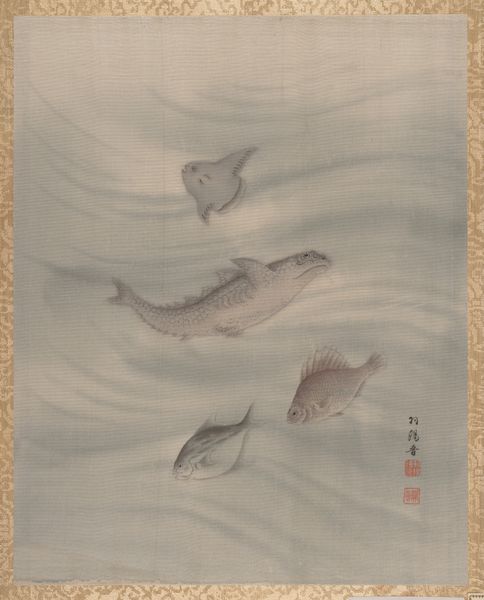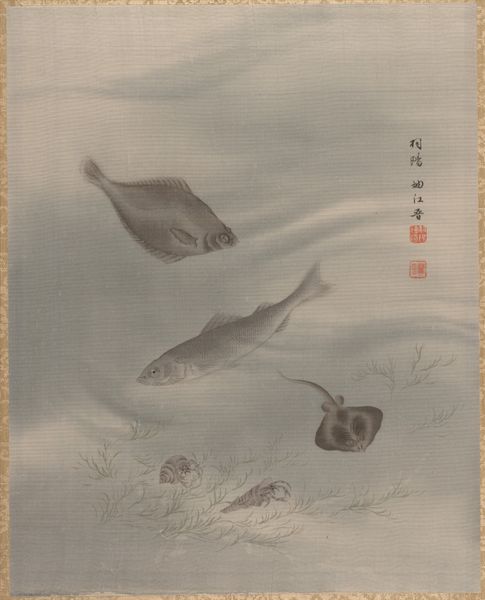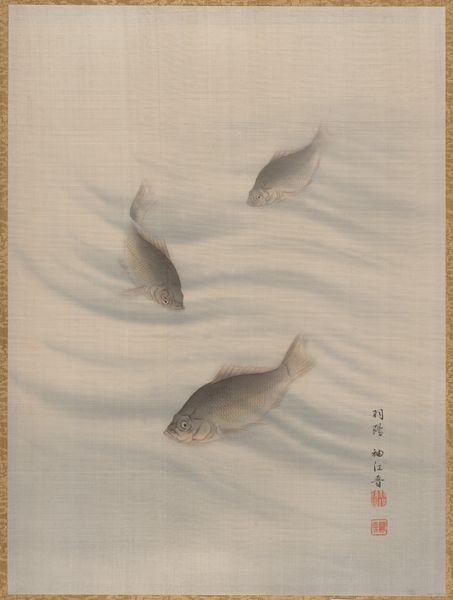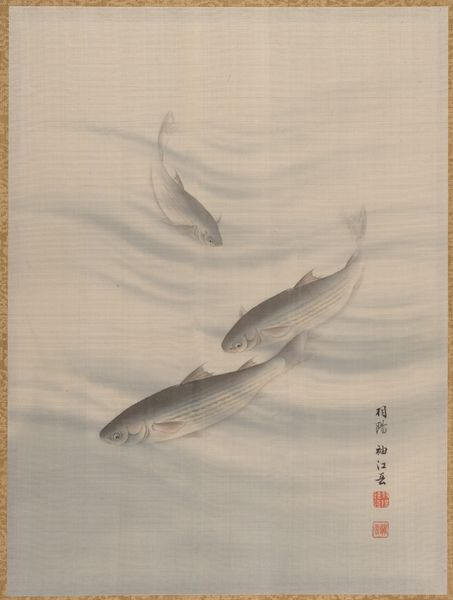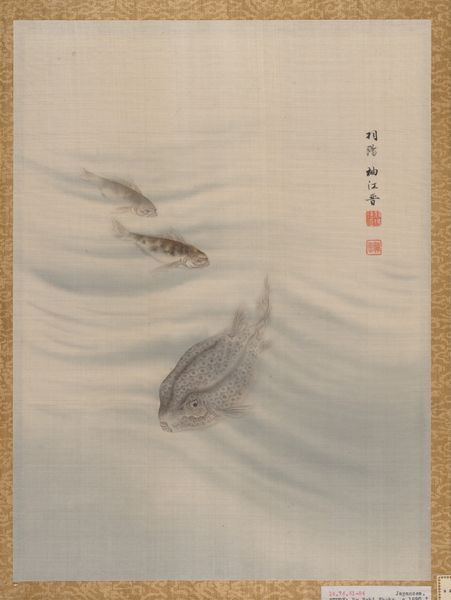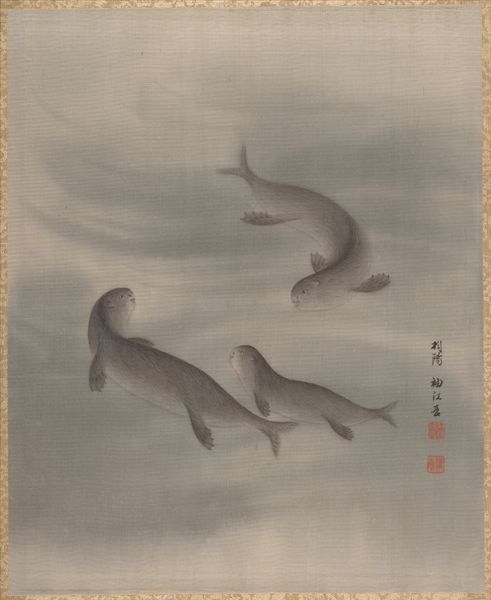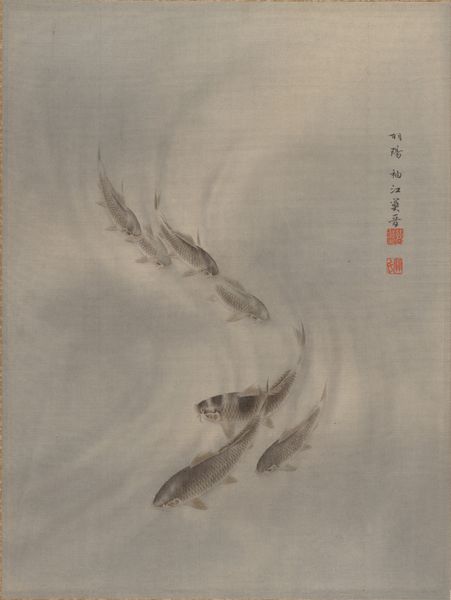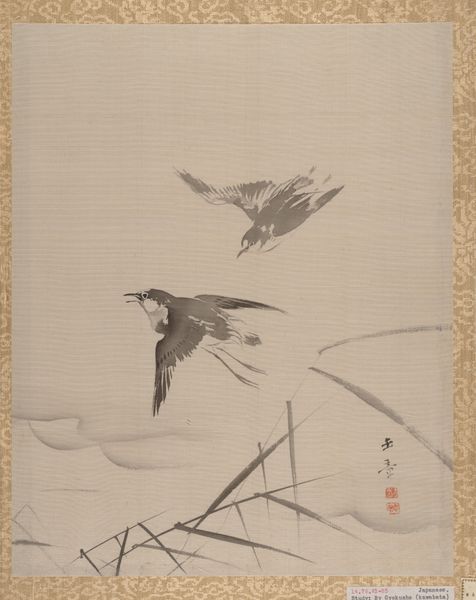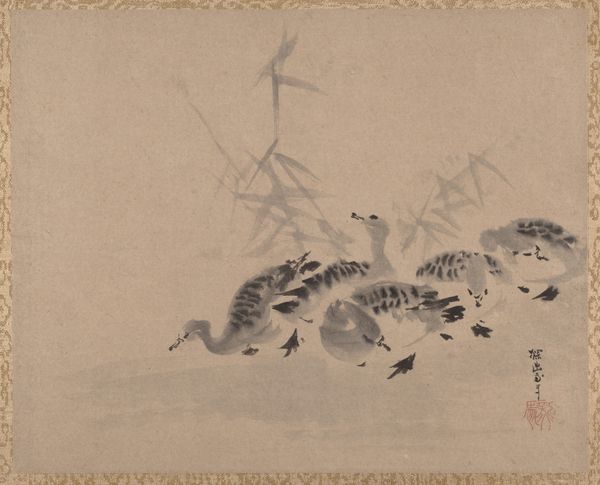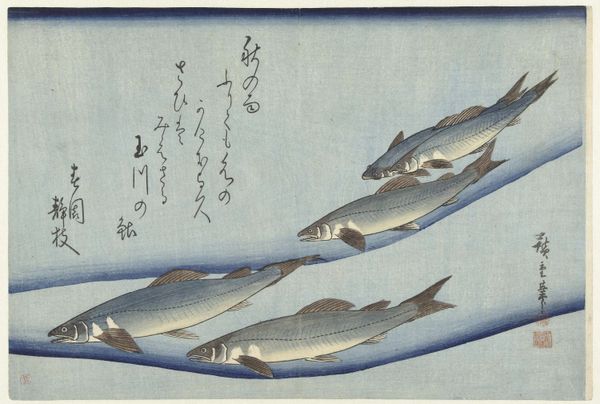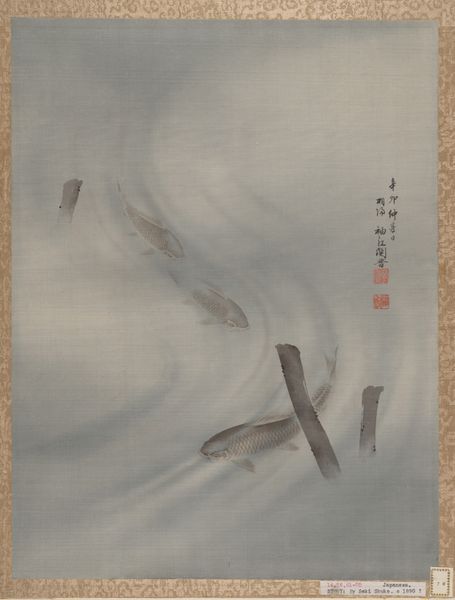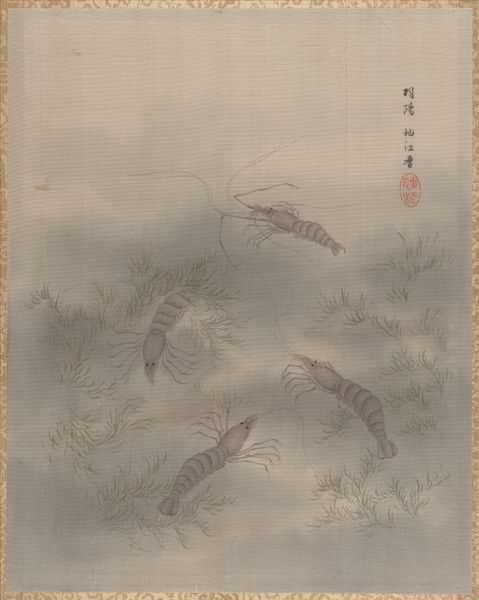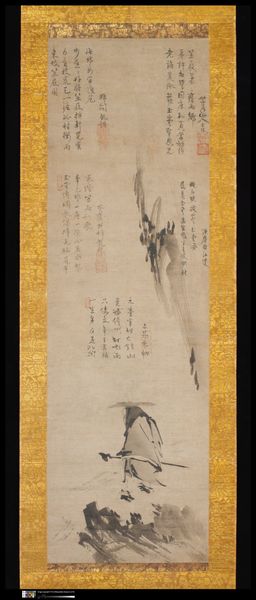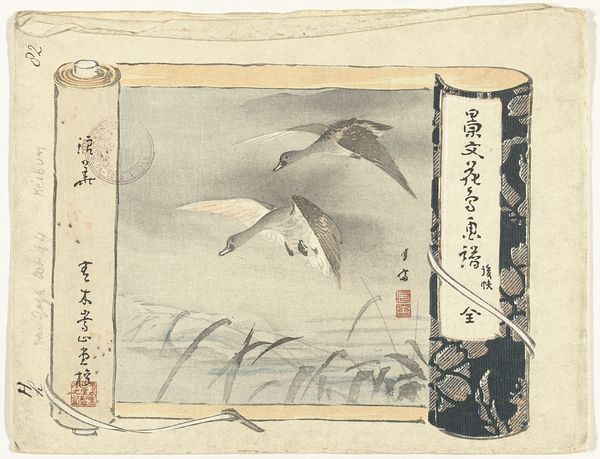
Dimensions: 13 1/2 x 10 7/8 in. (34.3 x 27.6 cm)
Copyright: Public Domain
Curator: Here we have "Fishes," a drawing created by Seki Shūkō sometime between 1890 and 1892, currently residing here at the Metropolitan Museum of Art. Editor: My first impression is one of serene stillness. The soft watercolor and ink palette creates a muted, almost dreamlike quality, with those sturgeon-like fish giving it a somewhat archaic, primordial feel. Curator: Shūkō worked during a fascinating period of modernization in Japan, during which the role of traditional arts like Ukiyo-e were being hotly debated and renegotiated with the influx of Western styles and academic art institutions. The fact that this artist chose aquatic life is meaningful. Editor: It certainly is. Fish, across cultures, often symbolize prosperity, abundance, and transformation. Water itself, of course, representing the unconscious, emotions, and the cyclical nature of life and death. Could Shūkō be subtly commenting on a moment of deep change, reflecting on the depths from which these transformations spring? Curator: Precisely! While adopting elements of Western realism, Shūkō retained a distinct Japanese aesthetic and subject matter. He participated in exhibitions of the Japan Art Association during a time when traditional art found itself squeezed between outright dismissal as old-fashioned or re-interpretation to adapt to western ideals and styles, for greater acceptance from Japan's elite. Editor: I find myself drawn to the composition itself. The fishes, rendered with such delicate detail, are placed in an ambiguous, almost abstract space. Are they swimming, suspended, or merely impressions floating across the mind’s eye? Curator: It prompts a reflection on how cultural institutions, too, have historically ‘placed’ and interpreted Japanese art—sometimes with the best intentions, sometimes through a distorted lens of colonial perspectives. Editor: It’s a delicate balance, isn’t it? Trying to preserve the intrinsic cultural significance of these symbols while making them accessible to a wider audience. I am compelled to examine my perspective here too. Curator: Indeed, “Fishes” by Seki Shūkō acts as a window into that complex period of Japanese art history, reflecting both cultural continuity and moments of negotiation and transformation in plain view. Editor: The way Shūkō rendered these denizens of the deep creates an intimate moment of connection, spanning across time, artistic intention and cultural identity.
Comments
No comments
Be the first to comment and join the conversation on the ultimate creative platform.
